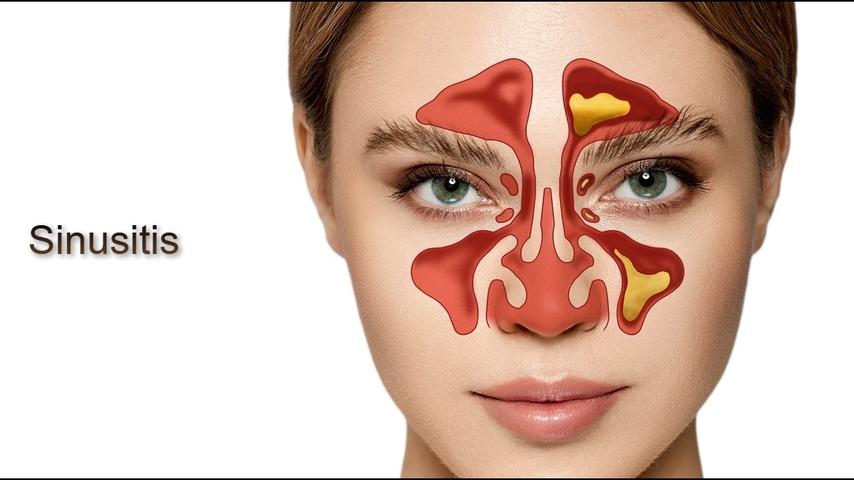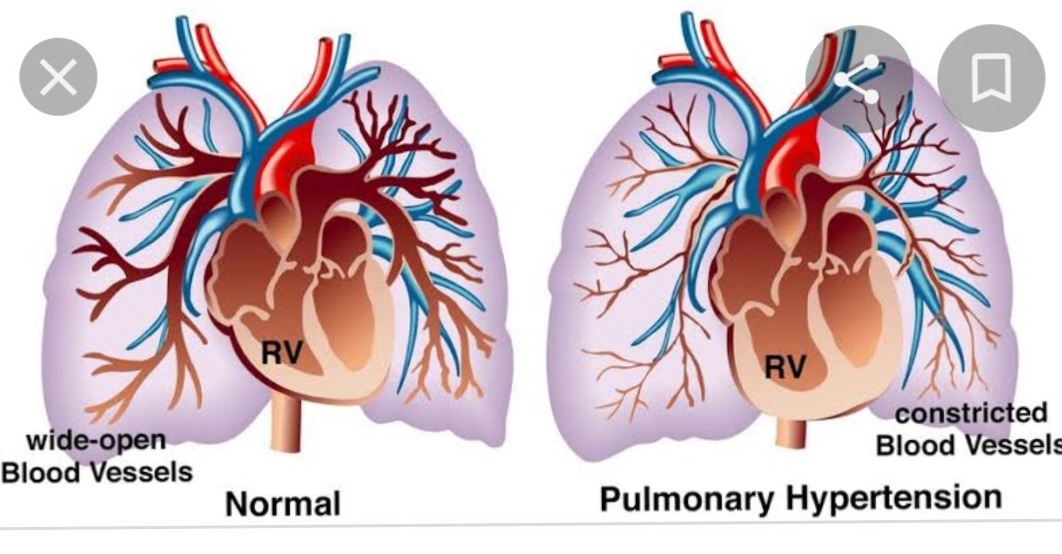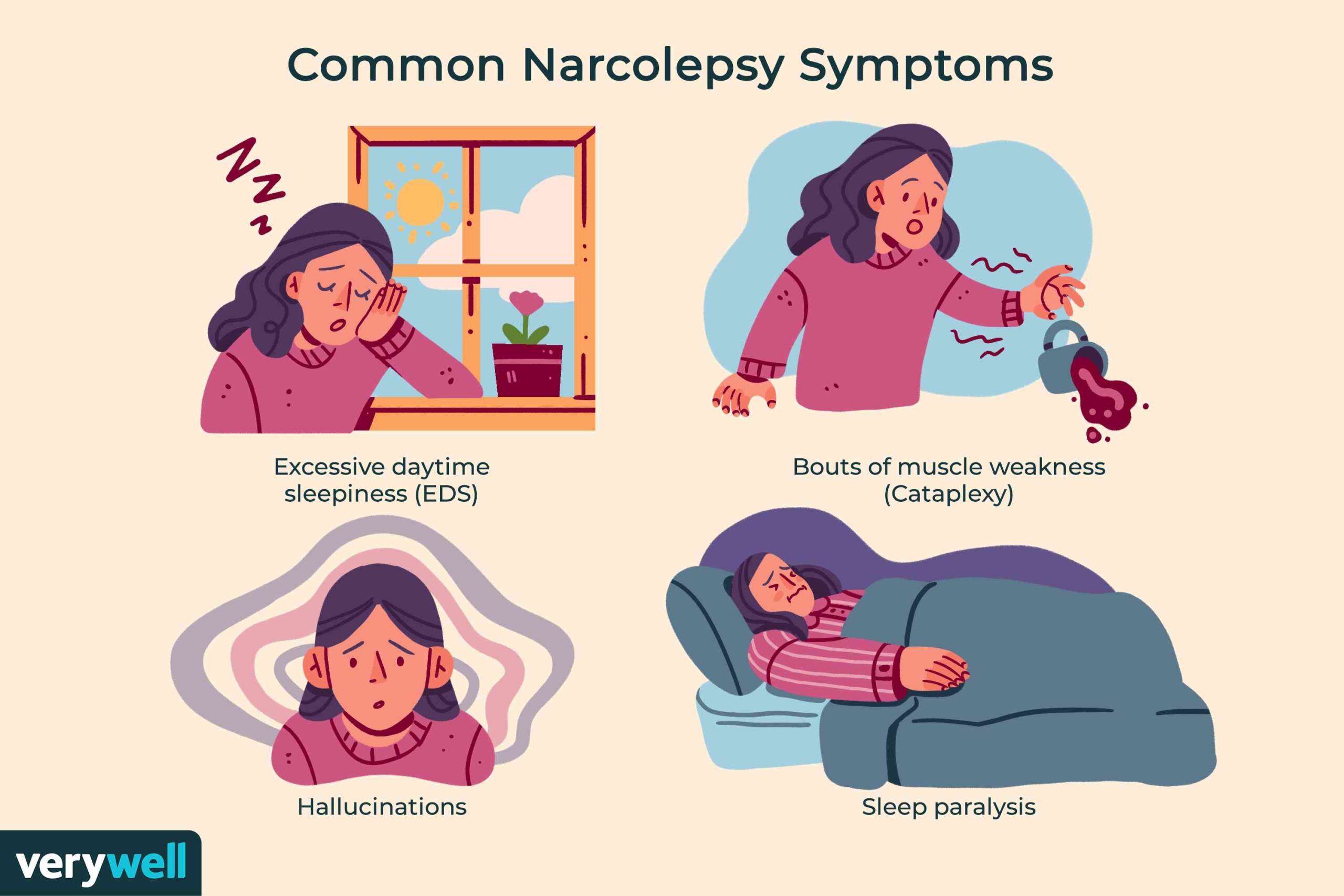Sinusitis With Cough -various aspects-
Introduction
A cough is a frequent indication of sinusitis, or a sinus infection. It may be more severe during the night.


Symptoms of sinusitis


- Runny or congested nose
- Thick green or yellow mucus from the nose
- Facial discomfort or pressure
- Head pain
- Fever
- Unpleasant breath or diminished sense of smell
- Sore throat
- Postnasal drip
- Coughing
If Any Patient of ENT Requires Any Surgery, Opd Consultation Or Online Consultation In Clinic of ENT Specialist Doctor Dr. Sagar Rajkuwar ,He May Contact Him At The Following Address-
Prabha ENT Clinic, Plot no 345,Saigram Colony, Opposite Indoline Furniture Ambad Link Road ,Ambad ,1 km From Pathardi Phata Nashik ,422010 ,Maharashtra, India-Dr. Sagar Rajkuwar (MS-ENT), Cell No- 7387590194, 9892596635
Causes of sinusitis
- A cold that does not get better or deteriorates after 7–10 days
- Obstructed mucus drainage resulting in bacterial growth
- Viruses and bacteria that can also trigger the flu or pneumonia
Treatment for sinusitis


- Apply a heated compress to your sinuses
- Utilize a nasal wash or sinus rinse
- Take an antihistamine to alleviate inflammation
- Employ a nasal decongestant spray
- Make use of a humidifier to increase moisture in the air
When to seek medical advice
You should talk to your healthcare provider if your symptoms persist longer than 7–10 days or worsen roughly a week after the cold begins.
Other related conditions
Sinusitis may be linked to asthma and gastroesophageal reflux.
Do Sinus Infections Cause Coughing?
Can you cough if you have a sinus infection? Undoubtedly, a sinus infection can cause coughing. This specific condition is entirely related to extra mucus and the way your sinuses try to clear that mucus.
Your body is likely to produce more mucus than usual when you have a cold, allergies, or a sinus infection, which can lead to the mucus leaking down your throat. Although it may sound horrible, mucus in the throat is rather typical and can occur whether you are ill or not.
On the other hand in Sinusitis With Cough, if this leakage continues for a long time, you can develop a persistent cough. A cough brought on by a sinus infection isn’t always alarming, and you don’t necessarily need to schedule a doctor’s appointment.
Let’s examine the causes of coughing while having a sinus infection and possible remedies.
How sinus infections and coughing are related to one another
One of the many cold symptoms that are also linked to persistent sinus infections is post nasal drip, which occurs when extra mucus drains into your throat. However, postnasal drip doesn’t just make you cough. In addition, it may result in a painful throat, hoarseness, nausea, and even poor breath.
But why does coughing result from postnasal drip when you have a sinus infection?- in case of sinusitis with cough .Imagine mucus—or anything else, for that matter—running down your throat. Do you have a sore throat? Probably. Do you experience any tickling? in all likelihood. All of these sensations have the potential to (and typically do) cause a response, and that response is coughing.
Unfortunately, the continual coughing and blowing of your nose caused by the mucus discharge will just produce more mucus and aggravation. This is why it’s critical to comprehend the most effective methods for treating postnasal drip and sinus infections.
For Update On Further Important Health Related Topics And Frequently Asked Questions On Health Topics By General Population Please Click On The Link Given Below To Join Our WhatsApp Group –
https://chat.whatsapp.com/Lv3NbcguOBS5ow6X9DpMMA
How may a sinus infection be treated?- in case of sinusitis with cough
You should be able to manage things at home on your own if your postnasal drip and cough last between 7 and 10 days. You can use antihistamines, nasal saline washes, and natural home treatments (teas, essential oils, spicy meals, etc.) to treat post nasal drip and your cough.
However, use nasal sprays and certain decongestants with extreme caution. These medical procedures can end up making your mucus thicker, which could exacerbate your post-nasal drip and cough.
Having said that, you shouldn’t necessarily see a doctor if you develop a cough after getting a sinus infection. The full recovery from a sinus infection cough can occasionally take a few weeks. You should be fine as long as you see that your other symptoms are improving rather than getting worse.
When should I go to the doctor if I have sinusitis with cough ?
It might be time to consult a doctor if your sinus infection persists for more than 10 days or if you have an extremely terrible postnasal drip (and your other symptoms aren’t getting any better). It may also be necessary to contact a doctor if your sinus infection cough persists for more than 2 to 3 weeks.
Your doctor might suggest antibiotics at this point for sinusitis with cough . But if you frequently get chronic sinus infections, you might want to think about finding a more long-term cure. Balloon sinuplasty is one such therapeutic method.
A minimally invasive, in-office surgery called balloon sinuplasty takes less than 25 minutes to execute. There is no need to cut or remove any bone or tissue during this safe and efficient technique.
A balloon is put into your nasal cavity during this specific treatment, and it is subsequently inflated. Your sinuses will expand as a result of this procedure, which also restores appropriate drainage for a considerable amount of time. After treatment is finished, many say they have had long-lasting relief from sinus infections and other problems like sinusitis with cough. (three years or more of relief).
What happens if a sinus infection is left untreated?
Do you frequently get sinus infections?
If you’ve ever wondered if a sinus infection might cause you to cough, it may be time to look into your treatment choices. We can assist you if you suffer from persistent postnasal drip or recurrent sinus infections.
What are the sinuses’ anatomy and purpose?- in relation to sinusitis with cough
Voice resonance is made possible by sinus cavities. They aid in the elimination of undesirable particles from the sinus cavities as well as in filtering and moistening any air that is inhaled through the nasal passages. The skull is made lighter by the sinuses. Sinus cavities provide room for growth to occur.
What are the four major sinuses? in relation to sinusitis with cough
An illustration of sinus anatomy
The frontal, maxillary, ethmoid, and sphenoid paranasal sinuses are located in the lower forehead, beside the upper nose, the cheekbones, and the sphenoid, which is located behind the nose.
Anatomy of sinuses-in relation to sinusitis with cough
Uncertainty surrounds the paranasal sinuses’ overall purpose. The cavities enable the bone structure to grow without significantly increasing mass. Additionally, they offer social indicators that denote things like gender and sexual maturity. The paranasal sinuses are lined with respiratory mucosa. This ciliated respiratory mucosa secretes mucus.
Between the orbits are the ethmoid sinuses. They typically consist of three to eighteen labyrinths interspersed with one another. Based on where their openings are, these ethmoidal air cells are categorized geographically into anterior, middle, and posterior. The frontonasal duct or the ethmoidal infundibulum are the two places where the anterior ethmoidal sinus exits. The ethmoidal bulla, or perhaps directly above it, is where the middle group opens. The superior nasal meatus’ lateral wall is where the posterior group opens.
To know the anatomy of the sinuses is important in relation to sinusitis with cough .The maxillary sinus is the biggest paranasal sinus. The maxilla of the face has two pyramid-shaped maxillary sinuses on either side. To lessen the maxilla’s mass, it completely fills the bone. The middle semilunar hiatus in the lateral wall of the middle nasal meatus is where the maxillary sinus exits.
The frontal bone is home to the triangular-shaped frontal sinuses, which are located above the orbits. The size of these sinuses varies. The semilunar hiatus, which drains the maxillary sinus, continues from where they open at the lateral wall of the middle meatus.
The sphenoidal sinuses are located in the sphenoid’s body, to finish. They enter the sphenoid-ethmoidal recess through the back wall.
Any patient with sinus problems may contact ENT specialist doctor Dr Sagar Rajkuwar (MS-ENT) at the following adress-
Prabha ENT clinic, plot no 345,Saigram colony, opposite Indoline furniture , Ambad link road ,Ambad ,1 km from Pathardi phata , Nashik , 422010 ,Maharashtra ,India -Dr Sagar Rajkuwar (MS-ENT), Cel no- 7387590194,9892596635
The above article relates cough and sinusitis ,so now it is necessary to go through articles on sinusitis given below-
Sinusitis
Sinusitis occurs when the tissue lining the sinuses becomes swollen or inflamed. It happens as a result of an inflammatory reaction or an infection caused by a virus, bacteria, or fungus.
Causes
The sinuses are air-filled cavities situated in the skull. They are found behind the forehead, nasal bones, cheeks, and eyes. Typically, mucus can drain out and air can flow freely through the sinuses.
Sinuses
When the sinus openings are obstructed or excess mucus accumulates, bacteria and other germs can proliferate more easily.
Sinusitis may arise from one of the following conditions:
Small hairs (cilia) within the sinuses do not effectively move mucus out. This may be due to various medical issues.
Colds and allergies can lead to excessive mucus production, or the resulting inflammation may obstruct the sinus openings.
A deviated nasal septum, a nasal bone spur, or nasal polyps might block the entrances to the sinuses.
Chronic infections can lead to mucosal swelling and inflammation.
Sinusitis
There are three classifications of sinusitis:
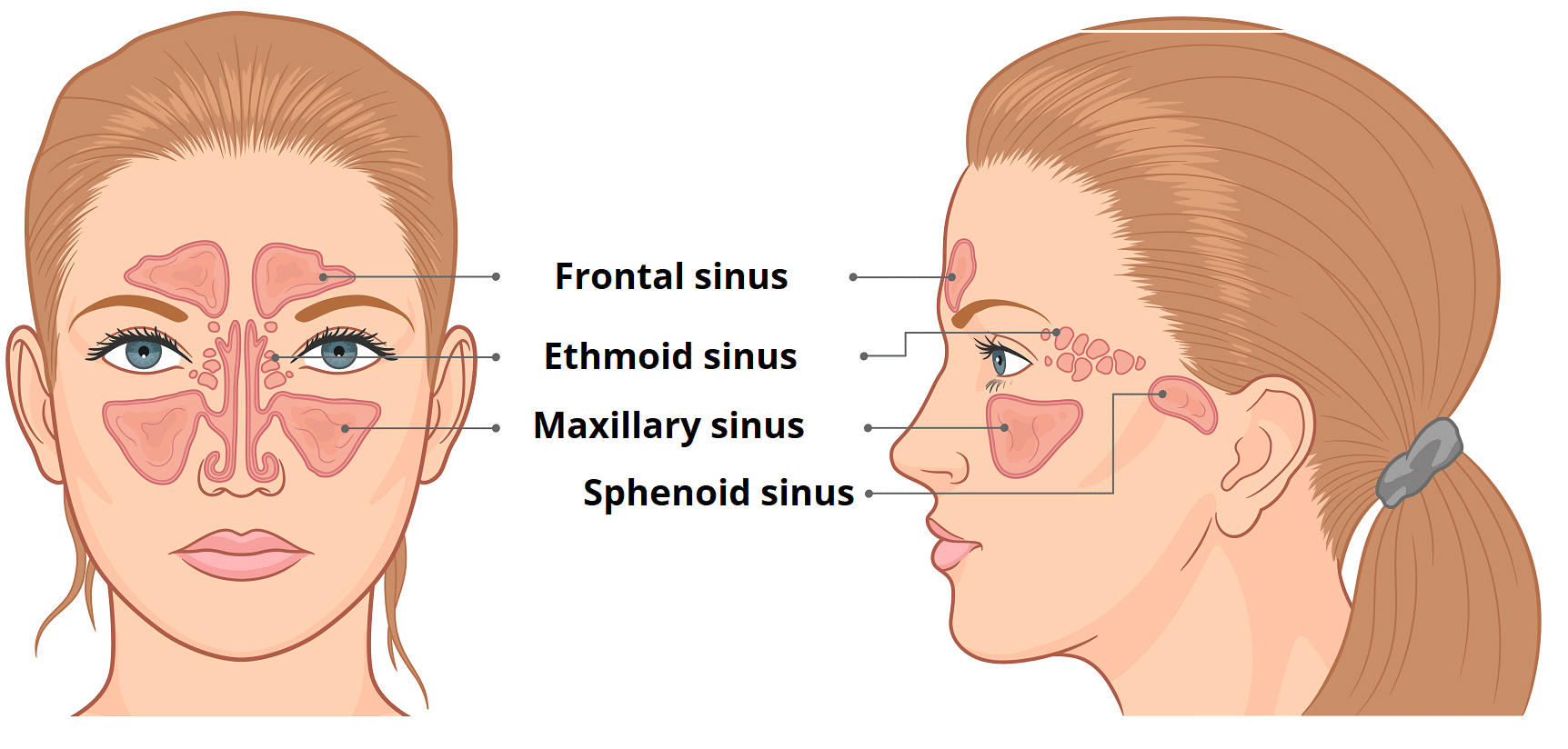

Acute sinusitis occurs when symptoms are evident for 4 weeks or less. It is triggered by viruses or bacteria multiplying in the sinuses.
Chronic sinusitis is identified when symptoms and sinus swelling persist for more than 3 months. It may result from bacteria or a fungus.
Subacute sinusitis is characterized by symptoms and swelling lasting from 1 to 3 months.
The following factors may heighten the risk of an adult or child developing sinusitis:
Allergic rhinitis or hay fever
- Cystic fibrosis
- Attendance at daycare
- Conditions that hinder cilia from functioning properly
- Altitude changes (flying or scuba diving)
- Enlarged adenoids
- Cigarette smoking
- Compromised immune systems due to HIV or chemotherapy
- Irregular sinus formations
- Allergic reactions
Symptoms
The signs of acute sinusitis in adults frequently follow a cold that fails to improve or worsens after 7 to 10 days. Symptoms comprise:
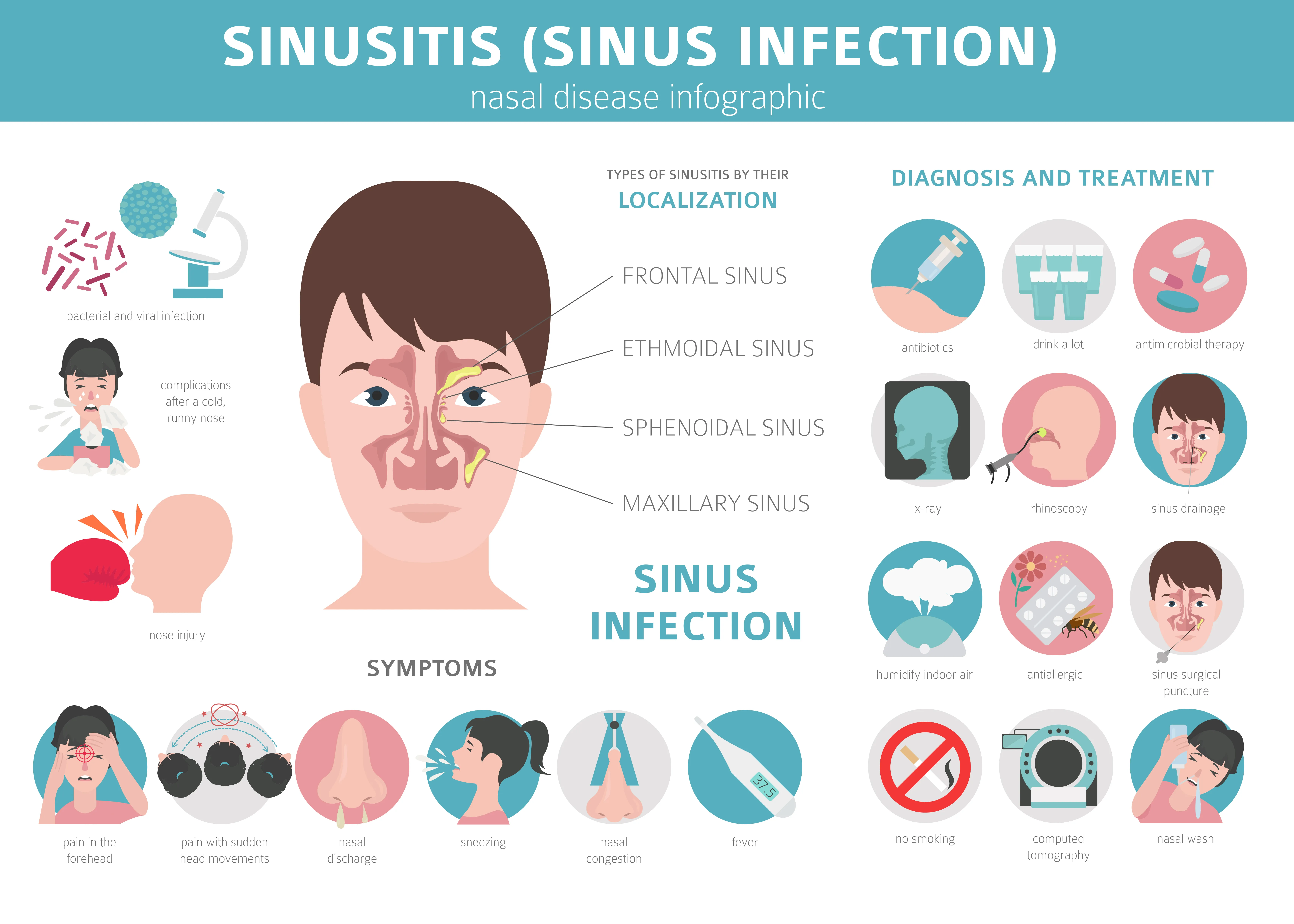

- Halitosis or diminished sense of smell
- Cough, often more severe at night
- Fatigue and a general feeling of illness
- Fever
- Headache
- Pressure-like discomfort, pain behind the eyes, toothache, or facial tenderness
- Nasal congestion and discharge
- Sore throat and postnasal drip
The symptoms of chronic sinusitis mirror those of acute sinusitis. However, the symptoms tend to be less severe and persist for more than 12 weeks.
Symptoms of sinusitis in children include:
- A cold or respiratory condition that initially improves and then worsens
- High fever, coupled with dark nasal discharge, lasting for at least 3 days
- Nasal discharge, with or without accompanying cough, that persists for over 10 days without improvement
Exams and Tests
The healthcare provider will assess you or your child for sinusitis by:
Inspecting the nose for evidence of polyps
Illuminating the sinus area (transillumination) to check for signs of inflammation
Applying pressure over a sinus region to detect tenderness potentially caused by infection
The healthcare provider might examine the sinuses using a fiberoptic scope (known as nasal endoscopy or rhinoscopy) to identify sinusitis. Typically, this procedure is performed by physicians who focus on ear, nose, and throat disorders (ENTs).
Imaging tests that could be utilized to determine treatment options are:
A CT scan of the sinuses to assist in diagnosing sinusitis or to inspect the bones and tissues of the sinuses more closely.
An MRI of the sinuses if there is a possibility of a tumor or fungal infection.
In most cases, standard x-rays of the sinuses do not effectively identify sinusitis.
If you or your child experiences sinusitis that persists or recurs, further tests may consist of:
- Allergy testing.
- Blood tests for HIV or other examinations for low immune function.
- Ciliary function test.
- Nasal culture.
- Nasal cytology.
- Sweat chloride tests for cystic fibrosis.
Treatment
SELF-CARE
Consider the following actions to alleviate congestion in your sinuses:
Use a warm, damp washcloth on your face several times each day.
Stay well-hydrated to thin the mucus.
Inhale steam 2 to 4 times daily (for instance, while sitting in the bathroom with the shower running).
Utilize nasal saline spray multiple times throughout the day.
Employ a humidifier.
Utilize a Neti pot or saline squeeze bottle to cleanse the sinuses.
Limit the use of over-the-counter spray nasal decongestants like oxymetazoline (Afrin) or phenylephrine (Neosynephrine). They may provide initial relief, but using them for over 3 to 5 days can exacerbate nasal congestion and lead to dependency.
To help alleviate sinus pain or pressure:
Avoid air travel when experiencing congestion.
Steer clear of extreme temperatures, sudden temperature shifts, and bending forward with your head lowered.
Consider taking acetaminophen, ibuprofen, or naproxen.
MEDICINE AND OTHER TREATMENTS
In most instances, antibiotics are unnecessary for acute sinusitis. Most of these infections resolve independently. Even when antibiotics are effective, they might only marginally decrease the duration of the infection. Antibiotics are more likely to be prescribed earlier for:
Children with nasal discharge, potentially accompanied by a cough, that does not improve after 2 to 3 weeks.
- Fever exceeding 102. 2°F (39°C).
- Headache or facial pain.
- Significant swelling around the eyes.
Acute sinusitis should be treated for a duration of 5 to 10 days. Chronic sinusitis should be managed for 3 to 4 weeks.
A cough is a frequent indication of sinusitis, or a sinus infection. This happens because sinusitis leads to the sinuses generating surplus mucus, which may drain into the throat and provoke a cough.
Symptoms
- A deep, phlegmy cough
- Coughing up mucus, also referred to as a “productive” cough
- A tickle or sensation of fullness in the throat
- Vividly colored mucus, such as green or yellow
- Fever, chills, fatigue, and muscle pain
- Hoarseness
- Sore throat
Causes
- When sinuses become swollen, they generate more mucus
- Obstructed drainage from the sinuses
- Viruses, bacteria, or fungi in the mucus
Home remedies
- Take nonprescription pain relievers like paracetamol or ibuprofen
- Utilize a decongestant nasal spray for a maximum of three to five days
- Rinse your nose with warm saline solution
- Consume ample fluids
- Ensure adequate rest
- Employ a humidifier to increase moisture in the air
Prevention
Avoid contact with individuals who have colds or other infections,
Wash your hands frequently,
Control allergies, and
Steer clear of cigarette smoke and contaminated air.
Can sinusitis cause a cough?
Sinus problems are distinctly associated with coughing conditions. Comprehending this relationship can assist patients in making more informed choices regarding their treatment, allowing them to address the underlying issue instead of merely relieving the symptoms.
How do you stop a sinus infection cough?
If your sinus infection and post nasal drip with cough persist for 7-10 days, you should be able to manage on your own at home. To alleviate post nasal drip and your cough, you may utilize antihistamines, nasal saline rinses, and natural home treatments (teas, essential oils, spicy foods, etc).
How long does a sinus infection cough last?
How long does a cough following a sinus infection persist? Most coughs after a sinus infection resolve within a few weeks as you begin to feel better and your sinus inflammation subsides, but some individuals may experience a cough that continues for weeks or even months.
Sinusitis (a sinus infection) might cause a cough, particularly if it’s accompanied by additional symptoms like facial discomfort, a thick nasal discharge, or postnasal drip. When mucus drips down the back of the throat, a condition known as postnasal drip can irritate the throat and cause coughing. Additional signs of sinusitis include facial pain or pressure, a blocked nose, and occasionally fever.
Further explanation:
Cough and Postnasal Drip:
An increase in mucus production, which may drip down the back of the throat (postnasal drip), can result from sinus infections. This might cause a cough and irritate the throat.
Additional Signs of Sinusitis:
Sinusitis may also produce facial pain or pressure, a runny or blocked nose, and a thick, discolored nasal discharge in addition to the cough.
Length of Cough:
Even after other symptoms of sinusitis, such as nasal congestion, have subsided, the cough can continue for several weeks.
When to See a Doctor:
It’s crucial to visit a doctor if your cough is persistent or accompanied by other alarming signs, such as a high temperature or worsening symptoms.
Treatment:
Addressing the underlying reason, which may be bacterial or viral, is frequently a part of sinusitis therapy. Over-the-counter remedies such as pain relievers and decongestants may help alleviate symptoms. If the illness is brought on by bacteria, antibiotics may be recommended in certain instances.
“If a blocked nose and cough continue for more than 10 to 14 days, we begin to suspect a sinus infection,” O’Hare says. After a few days, you could feel better, but then your cold symptoms might come back and worsen. A rebound, which may be an indication of a bacterial sinus illness, is what this is known as.
Different forms of sinusitis
Based on the duration of the illness (acute, subacute, chronic, or recurrent) and its etiology (bacterial, viral, or fungal), we classify different forms of sinusitis.
Acute, subacute, chronic, and recurrent sinusitis
- The symptoms of acute sinusitis (nasal congestion, discharge, facial pain/pressure, and loss of smell) persist for less than four weeks. The common cold and other viruses are the most common culprits.
- Symptoms of subacute sinusitis persist for four to twelve weeks.
- Symptoms of persistent sinusitis persist for at least 12 weeks. The most common culprit is bacteria.
- The symptoms of recurrent acute sinusitis reappear at least four times annually, with each episode lasting for no more than two weeks.
Sinusitis caused by viruses and bacteria
The majority of instances of sinusitis are caused by viruses, such as the one that causes the common cold. Sinusitis may be caused by bacteria, or you may become infected with bacteria following a viral infection. You may have bacterial sinusitis if your face hurts and you have a stuffy or runny nose that doesn’t go away after ten days. Your symptoms may appear to get better, but they will then come back and be worse than they were at first. Bacterial sinusitis typically responds well to decongestants and antibiotics.
Sinusitis caused by fungal
Fungal sinusitis is typically more severe than other types of sinusitis. You’re more likely to get them if your immune system is compromised.
How can I tell if I have a cold, an allergy, COVID, or sinusitis?
The symptoms of colds, COVID-19, allergies, and sinus infections are similar. They might be hard to differentiate. The typical course of the common cold is that it develops, reaches its peak, and then gradually vanishes. It goes from a few days to a week. Sneezing, itching nose and eyes, congestion, runny nose, and postnasal drip (mucus in your throat) are all symptoms of nasal allergies. They typically don’t result in the face discomfort associated with sinus infections. Other signs of COVID-19 include fever and shortness of breath.
Sinus infections can result from a cold, COVID, or allergies. For some viral infections, such as COVID-19 and the flu, you may either get tested by a healthcare professional or test yourself.
What are the risk factors for sinusitis?
Some people are more prone to sinusitis than others. Factors that raise the risk include:
- allergies of the nose.
- Asthma.
- Polyp on the nose (growth).
- Septum deviation. The tissue line that divides your nose is called the septum. The passage on one side of your nose is constricted by a deviated septum, which is not straight. This may result in a blockage.
- An impaired immune system. This may be caused by specific drugs or diseases such as HIV or cancer.
- Smoking.
Is sinusitis contagious?
The condition itself is not communicable. However, the viruses and germs that can cause it are. Remember to practice proper hand washing, stay away from other people if you’re ill, and sneeze or cough into your elbow.
What are the consequences of neglecting sinus infection?
Sinusitis frequently clears up on its own, so therapy is not always necessary. Untreated sinus infections rarely result in life-threatening illnesses. This occurs when germs or fungus spread to your brain, eyes, or surrounding bone.
What methods are used to diagnose a sinus infection?
Based on your symptoms and health history, healthcare professionals can identify sinusitis. Your ears, nose, and throat will be examined by a provider for any indications of swelling, discharge, or obstruction. An endoscope, which is a little, lighted device, may be used to examine the interior of your nose.
Your primary care physician may also recommend that you see a specialist, such an otolaryngologist (sometimes referred to as an ENT, which is an ear, nose, and throat specialist).
Tests for identifying sinusitis in particular
Your doctor may order particular tests to help determine if you have a sinus infection, such as:
- Endoscopy of the nose.
- Swabs of the nose. To collect a fluid sample from your nose, your provider might use a soft-tipped stick. They will check it for viruses or other microorganisms that could be the source of your symptoms.
- Photography. A computer tomography (CT) scan may be ordered by your doctor in order to gain a better understanding of what is going on inside your sinuses in certain situations.
- Testing for allergies. Your provider may perform allergy tests if you have persistent sinusitis to see if there are any allergies that may be causing it.
- Biopsy. In rare instances, a provider can collect a tissue sample from your nose for examination.
What does a sinusitis cough sound like?
Experiencing a deep, phlegmy cough is typical among individuals with sinus infections. You may also be bringing up mucus, commonly referred to as a “productive” cough-FOR FURTHER INFORMATION IN GREAT DETAIL PL CLICK ON THE LINK GIVEN BELOW-It is always better to view links from laptop/desktop rather than mobile phone as they may not be seen from mobile phone. ,in case of technical difficulties you need to copy paste this link in google search. In case if you are viewing this blog from mobile phone you need to click on the three dots on the right upper corner of your mobile screen and ENABLE DESKTOP VERSION.
FOR FURTHER INFORMATION IN GREAT DETAIL ON Can Sinus Infection Cause Hair Loss PL CLICK ON THE LINK GIVEN BELOW-It is always better to view links from laptop/desktop rather than mobile phone as they may not be seen from mobile phone. ,in case of technical difficulties you need to copy paste this link in google search. In case if you are viewing this blog from mobile phone you need to click on the three dots on the right upper corner of your mobile screen and ENABLE DESKTOP VERSION.
FOR FURTHER INFORMATION IN GREAT DETAIL ON Symptoms of Perforated Sinus After Tooth Extraction PL CLICK ON THE LINK GIVEN BELOW-It is always better to view links from laptop/desktop rather than mobile phone as they may not be seen from mobile phone. ,in case of technical difficulties you need to copy paste this link in google search. In case if you are viewing this blog from mobile phone you need to click on the three dots on the right upper corner of your mobile screen and ENABLE DESKTOP VERSION.
FOR FURTHER INFORMATION IN GREAT DETAIL ON Sinusitis in Hindi PL CLICK ON THE LINK GIVEN BELOW-It is always better to view links from laptop/desktop rather than mobile phone as they may not be seen from mobile phone. ,in case of technical difficulties you need to copy paste this link in google search. In case if you are viewing this blog from mobile phone you need to click on the three dots on the right upper corner of your mobile screen and ENABLE DESKTOP VERSION.
FOR FURTHER INFORMATION IN GREAT DETAIL ON How to rid of a sinus infection headache PL CLICK ON THE LINK GIVEN BELOW-It is always better to view links from laptop/desktop rather than mobile phone as they may not be seen from mobile phone. ,in case of technical difficulties you need to copy paste this link in google search. In case if you are viewing this blog from mobile phone you need to click on the three dots on the right upper corner of your mobile screen and ENABLE DESKTOP VERSION.
Click On The Link’s Below To Learn More About This Disease.
Prabha ENT Clinic, Plot no 345,Saigram Colony, Opposite Indoline Furniture Ambad Link Road ,Ambad ,1 km From Pathardi Phata Nashik ,422010 ,Maharashtra, India-Dr. Sagar Rajkuwar (MS-ENT), Cell No- 7387590194, 9892596635
Issued in public interest by –

